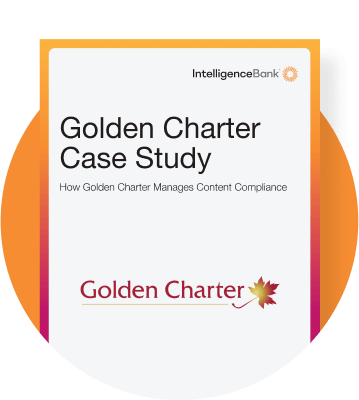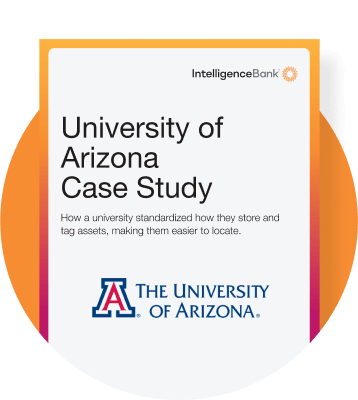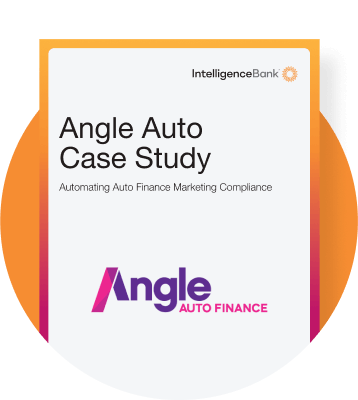For U.S. financial institutions, compliance with Regulation Z is non-negotiable—it safeguards consumer trust, protects reputations, and helps avoid costly penalties. But when it comes to marketing, interpreting and applying its requirements can be anything but straightforward.
In this guide, we review what Banking Regulation Z is, the penalties for non-compliance, and how technology can streamline the review and approval process to ensure adherence to these critical regulations.
Disclaimer: This document is not intended as a substitute for legal advice. It has been prepared using publicly available information and insights from industry experts. Companies should consult legal and compliance professionals when establishing internal protocols.
What is Banking Regulation Z?
Banking Regulation Z, also known as the Truth in Lending Act (TILA), is a federal law in the United States designed to promote transparency and fairness in consumer lending. Enforced by the Consumer Financial Protection Bureau (CFPB), Regulation Z requires lenders to provide clear and accurate information about the terms and costs of credit to consumers.
The regulation applies to a wide range of credit products, including mortgages, credit cards, auto loans, and personal loans. Its primary goal is to ensure that consumers can make informed decisions by requiring lenders to disclose key details such as interest rates, fees, repayment terms, and total loan costs.
Regulation Z also includes specific rules for marketing communications, ensuring that promotional materials are not misleading and that they provide the necessary disclosures to protect consumers.
What Are the Penalties for Non-Compliance with Banking Regulation Z?
Non-compliance with Banking Regulation Z can have severe consequences for financial institutions. The CFPB and other regulatory bodies take marketing compliance violations seriously, as they can harm consumers and undermine trust in the financial system.
Here are some potential penalties for failing to comply:
- Fines: Financial institutions can face significant fines for violating Regulation Z. Case in point; in 2024, the CFPB took action against Goldman Sachs over its marketing, offering, and servicing of the Apple Card. As a result, Goldman was ordered to pay $19.8 million in consumer redress, a $45 million civil penalty, and ensure compliance with the law.
- Reputational Damage: Publicized violations can damage a bank’s reputation, leading to a loss of customers and business opportunities.
- Increased Regulatory Scrutiny: Non-compliant institutions may face more frequent audits and inspections, which can be time-consuming and costly.
- Legal Action: In some cases, non-compliance can result in lawsuits from consumers or class-action claims, further escalating costs and reputational harm.
These penalties and others like them hit hard and bring home the importance of ensuring that all marketing materials and consumer communications comply with Regulation Z.
Challenges of Upholding Banking Regulation Z in Marketing
While compliance with Regulation Z is critical, many financial institutions struggle to meet its requirements due to the following challenges:
Complex Disclosure Requirements
Regulation Z mandates specific disclosures in marketing materials, such as the annual percentage rate (APR), finance charges, and repayment terms. Ensuring that these disclosures are accurate and prominently displayed can be challenging, especially in digital formats with limited space.
High Volume of Marketing Content
Financial institutions produce a vast amount of marketing content, including digital ads, email campaigns, social media posts, and printed materials. Reviewing each piece for compliance with Regulation Z can overwhelm compliance teams and cause approval bottlenecks.
Short Production Deadlines
Due to the fast moving nature of banking and ‘always-on’ digital advertising, marketing teams often operate under tight deadlines. It’s often Compliance that bears the brunt of fast-tracking approvals which if managed manually, can increase the risk of errors and omissions.
Varying Interpretations of Regulations
Regulation Z’s requirements can be open to interpretation, leading to inconsistencies in how compliance is applied across different materials and teams.
Resource Constraints
Many institutions operate with lean compliance teams, making it difficult to keep up with the growing volume of marketing content and evolving regulatory requirements.
Can Banking Regulation Z Marketing Compliance Be Automated?
Absolutely. Automation can significantly streamline the compliance process to keep up with production demands. It can also reduce the risk of errors and ensure consistent adherence to Regulation Z.
Here’s how a compliance automation platform can help:
- Create Risk Rules: IntelligenceBank offers a range of pre-existing rules designed to help businesses comply with Regulation Z. These rules can be customized or expanded to fit your organization’s compliance needs.
- Automatically Review Content: Marketing content is automatically reviewed. The platform uses AI-powered technology to see if any of these rules have been breached in your content, (e.g. collateral, digital ads, social media etc.). Reviews can be done at any stage in the production cycle – even when content is already live. The platform provides you with feedback and suggestions for improvement.
- Keep a Record: The platform automatically maintains records of all comments made on PDFs, artwork and images etc. so they can easily be referred to down the line.
Benefits of Automating Regulation Z Compliance
There’s no replacing human oversight and judgment when it comes to nuanced marketing compliance issues, however AI reviews can take care of the basic, binary rules mandated by regulators.
In fact, amalgamated IntelligenceBank research for clients shows that over 75% of comments on marketing content made by Legal or Compliance teams relates to errors such as incorrect claims, and missing or incorrect disclaimers. They are the type of comments that AI can deal with on the spot and lift a large part of the burden for Compliance teams. Here is a snapshot of of the results:
- 17% of comments relate to brand compliance issues: These focused on things like brand name usage, logo issues, font sizes, tone, and readability.
- 38% of comments relate to legal and compliance issues: Common concerns included outdated disclaimers, inaccurate claims, missing disclosures, and specific legal language requests.
- 22% of comments are about wording: This includes phrasing issues around claims and product disclosures, rather than basic spelling and grammar.
- 23% of comments required direct human intervention, where nuance or specific context was needed.
To see how much time automating content and web risk reviews can save, check out our Cost Savings Calculator. Additionally, since AI reviews can handle large volumes of content, it becomes far easier for firms to keep up with the growing demand for marketing materials. This scalability ensures that compliance doesn’t become a bottleneck, allowing teams to focus on higher-level tasks.
Speed aside, AI-powered compliance solutions also help reduce human bias in the review process. Different reviewers may interpret compliance rules slightly differently, leading to inconsistencies. AI applies the same standardized checks across all materials, ensuring greater uniformity and reducing the likelihood of subjective errors.
Firms that have adopted AI-driven compliance tools report significant reductions in manual review time and a faster go-to-market process. By automating compliance checks, marketing teams can produce content more efficiently while maintaining strict adherence to CFPB regulations.
Why Existing Rule Lists Work
A marketing compliance platform built for specific industry or regional regulations is designed to identify risks with precision. This focused approach enhances accuracy while cutting set up and deployment timelines dramatically.
Beyond efficiency, industry-specific compliance platforms help teams stay proactive amid evolving regulations. The CFPB’s rules and expectations are constantly shifting, with increasing regulatory scrutiny. IntelligenceBank’s rule libraries are continuously updated, giving teams access to the latest compliance requirements and ensuring they can adapt swiftly to regulatory changes.
Simplified Regulation Z Compliance Checklist
To help give you an idea of the nature of the issues pre-existing rule lists review, here’s a simplified checklist of key Regulation Z requirements:
- Disclose Key Terms: Include the APR, finance charges, and repayment terms in all promotional materials.
- Avoid Misleading Claims: Ensure that all claims are accurate and substantiated.
- Prominent Disclosures: Make required disclosures clear and conspicuous, avoiding fine print.
- Triggering Terms: If certain terms (e.g., “0% interest”) are used, include all required additional disclosures.
- Consistency Across Channels: Ensure that disclosures are consistent across digital, print, and other marketing channels.
Get the complete list with IntelligenceBank industry-specific risk reviews.
Regulators Are Leveraging AI for Oversight
Just as financial institutions are adopting AI for compliance, regulators are also using advanced technology to monitor adherence to regulations. In the United States, the CFPB has begun using AI to analyze consumer complaints and detect patterns of non-compliance.
This trend highlights the importance of staying ahead of regulatory expectations by embracing automation and ensuring that your marketing materials meet the highest standards of transparency and accuracy.
Want a Complete Checklist? Let’s Talk
While the checklist above provides a starting point, fully complying with Banking Regulation Z requires a detailed understanding of its requirements and how they apply to your marketing materials.
IntelligenceBank’s compliance platform offers a comprehensive, industry-specific rule library that can be customized to your institution’s needs. By automating content reviews and ensuring adherence to Regulation Z, you can reduce risk, save time, and maintain consumer trust.
Contact us today to learn how we can help you streamline your compliance process and stay ahead of regulatory scrutiny.




